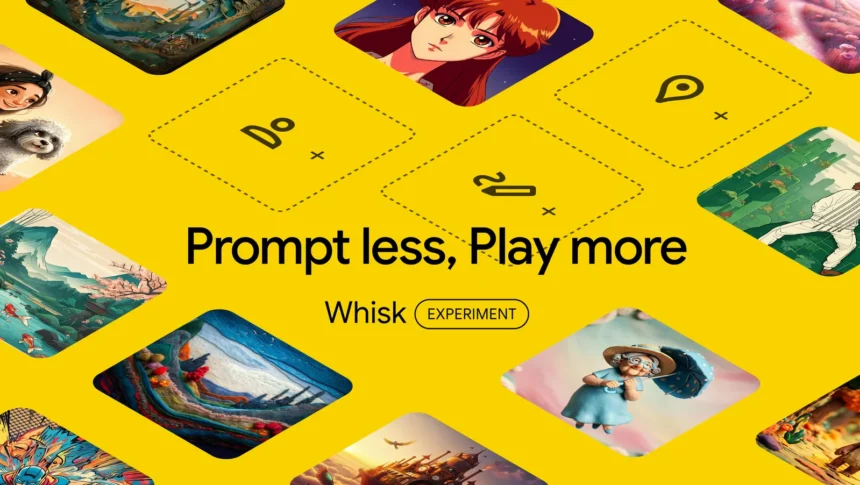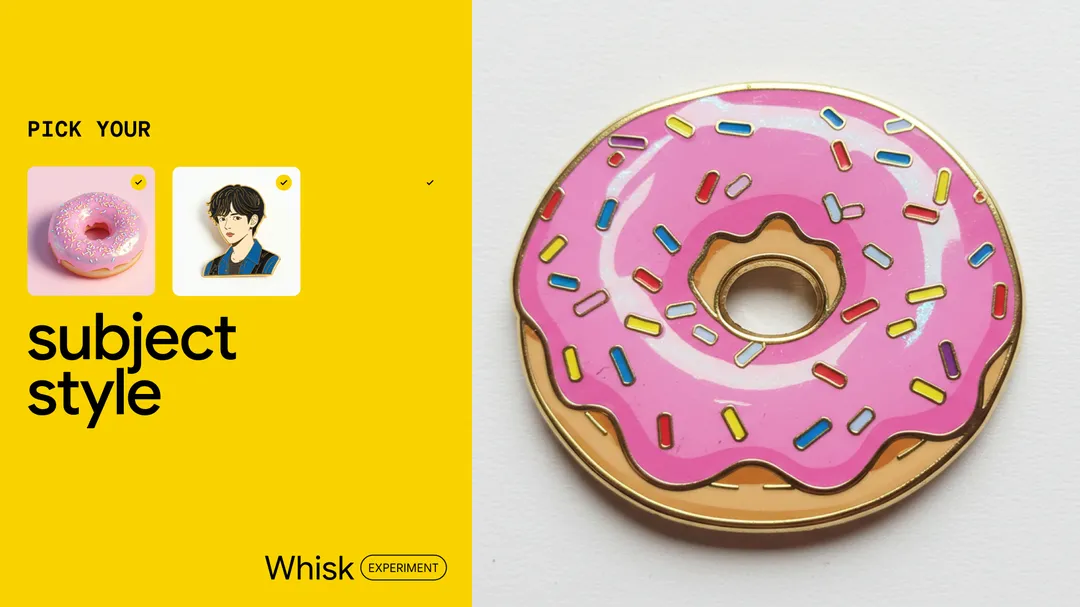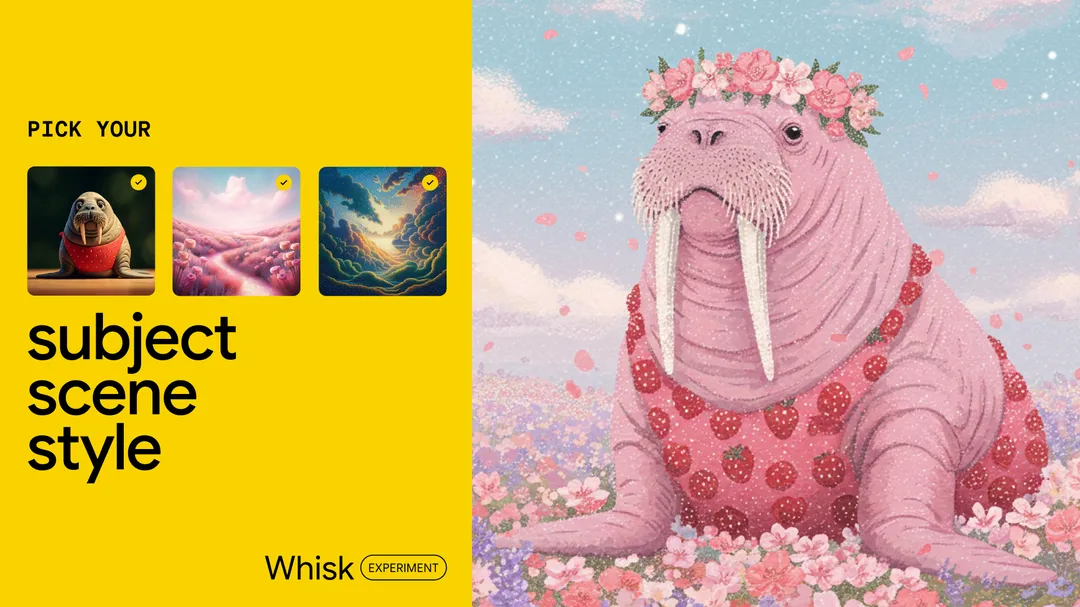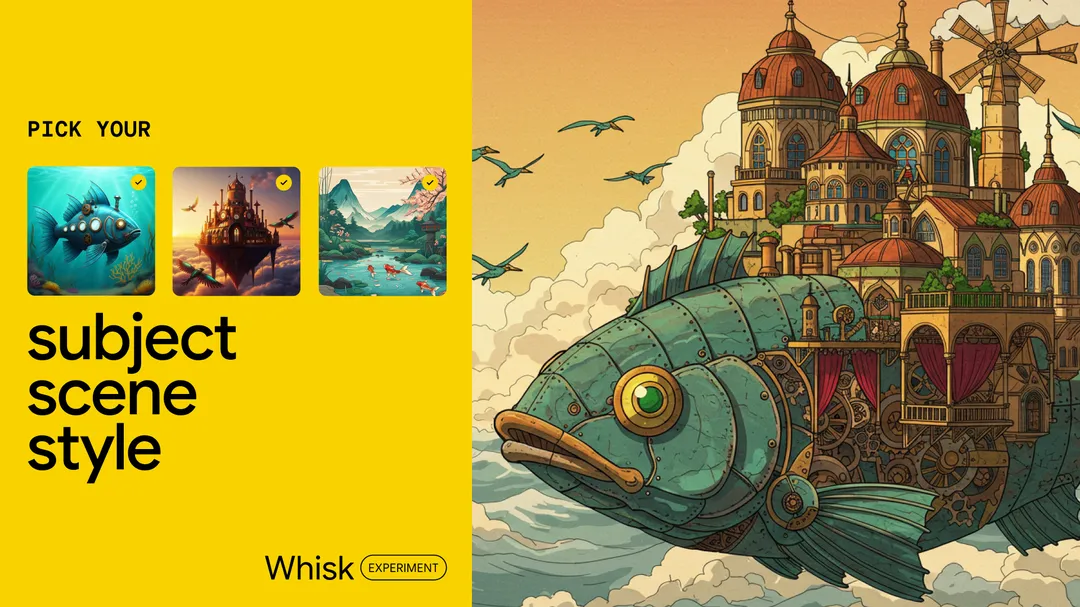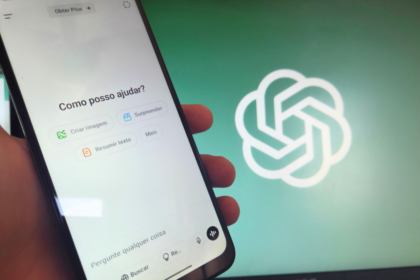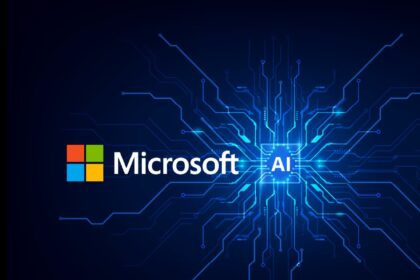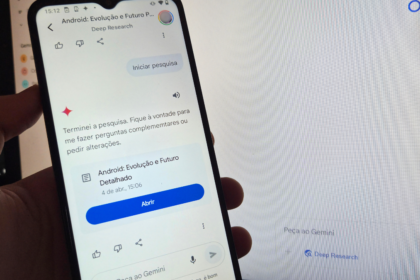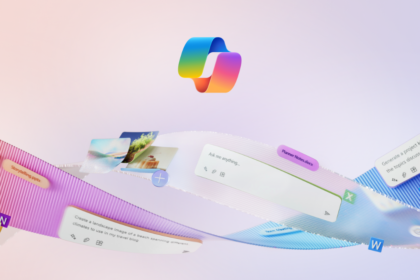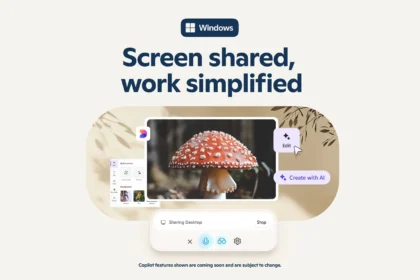Google Labs is currently testing an exciting new image-generation tool called Whisk, available to users based in the U.S. This cutting-edge tool moves beyond traditional text-to-image generation, offering a fresh approach that allows users to remix images by blending specific visual elements from three distinct photos.
Let’s explore how Whisk works, its unique features, and its potential to revolutionize creative processes.
What Is Whisk?
Whisk is built on Imagen 3, Google’s powerful image-generation model, designed to create realistic and imaginative images. Unlike typical image-generation tools that rely solely on text-based prompts, Whisk enables users to guide the creative process by using visual input—images—making it a more intuitive and hands-on approach for creative projects.
Whisk combines three primary components to generate images:
- Subject: This is the focal point of the image, which could be a person, pet, object, or anything else that you want to feature as the central element.
- Scene: The background or environment surrounding the subject, such as a beach, forest, cityscape, or any other setting that complements the subject.
- Style: This refers to the artistic aesthetic applied to the image, such as an impressionist painting, anime, a futuristic look, or even a vintage photograph style.
By blending these three components—subject, scene, and style—Whisk generates a completely unique image, offering virtually endless possibilities for artistic expression and creativity.
How Does Whisk Work?
Using Whisk is simple yet incredibly innovative. The process involves just a few straightforward steps:
1. Upload Three Images:
- First, you select three images to upload. One represents the subject, another the scene, and the third the style.
2. AI Captioning:
- Whisk then uses its AI system to analyze these images and generate a detailed caption that describes their visual elements.
3. Image Remixing:
- The power of Imagen 3 comes into play here, as it combines the captions into a new image, merging all three visual elements into one cohesive creation.
4. Text Customization:
- You can refine or customize the result by adding or editing text prompts. For instance, after uploading a photo of yourself, a tropical beach, and a futuristic style, you could add a text prompt like “A futuristic car driving through a neon-lit city” to influence the image further.
Imagine uploading a selfie, a tropical rainforest photo, and an impressionist painting. Whisk would combine these to generate an image of you standing amid the lush rainforest, painted in bold, impressionistic strokes—offering a truly unique and personalized result.
What Makes Whisk Different?
Whisk’s innovation lies in its visual-based prompting. While other popular text-to-image tools like DALL·E and Stable Diffusion rely on text prompts alone to generate images, Whisk allows users to create based on actual images. This approach is far more intuitive and accessible, particularly for those struggling to articulate their creative ideas using words alone.
Furthermore, combining specific images gives users a unique form of control. It isn’t just about relying on AI to interpret text—it’s about guiding the AI with a more visual and tactile process.
However, Whisk’s novel approach comes with its own set of challenges and limitations.
Limitations of Whisk
While Whisk presents groundbreaking potential, it is still a developing tool and comes with some limitations:
1. Image Inconsistencies:
- Since Whisk focuses on combining features from each image rather than replicating them exactly, there may be inconsistencies in the generated image. For example:
- The subject’s height, hairstyle, or skin tone might be altered.
- The subject might appear more stylized or simplified than in the original photo.
2. Abstracted Features:
- Whisk tends to abstract key features from the images, which may not always produce perfectly realistic or exact replicas of the uploaded photos.
Google acknowledges these quirks and allows users to view and modify the AI-generated captions and prompts to improve the final output. This transparency helps users fine-tune their creations and understand the AI’s process.
Real-World Applications
Why is Whisk more than just a fun experiment? The tool has significant potential across various creative fields, opening doors to new ways of generating content:
1. Graphic Design:
- Designers can prototype ideas by blending various inspirations in just a few clicks, facilitating faster workflows and innovative concepts.
2. Marketing:
- Brands can use Whisk to create compelling, customized visual ads by mixing product images, lifestyle shots, and creative artistic styles. This enables quick adaptation for different marketing campaigns.
3. Content Creation:
- Social media influencers, bloggers, and content creators can use Whisk to design unique visuals that align with their brand or personal style. For example, they could create eye-catching, custom visuals for posts or promotional materials.
Imagine creating a holiday card in seconds, combining a family photo, a snowy mountain backdrop, and a vintage postcard style—all personalized and professionally designed!
Creativity and Control
Whisk’s key strengths are its ability to balance creativity and user control. Unlike other tools that rely heavily on preset algorithms, Whisk allows users to maintain control over the outcome by combining visual and text prompts. This empowers intuitive creators who enjoy working with visuals and those who prefer to fine-tune results with more detailed instructions.
However, Whisk’s imperfections remind users that AI should be seen as a creative partner, not a replacement for human imagination. While AI-generated images might sometimes surprise you, these unexpected results can offer new avenues for artistic expression, encouraging users to embrace and explore creative imperfections.
Looking Ahead
Although still in the testing phase, Whisk represents a significant leap forward in generative AI technology. As it continues to evolve, it could become an essential tool for a wide variety of creative professionals, from graphic designers to content creators, helping them push the boundaries of what’s possible in digital art.
Google’s ongoing commitment to advancing generative AI is evident through Whisk, and this tool offers a glimpse into a future where visual storytelling is more accessible, diverse, and imaginative than ever before. With Whisk, the possibilities for blending art and technology are limitless. Who knows? Your next artistic masterpiece might be a “whisk” away.
By merging images, styles, and scenes intuitively and user-driven, Whisk is set to redefine how we create and consume visual content. Keep an eye on this tool as it evolves—it might become your go-to creative companion.

